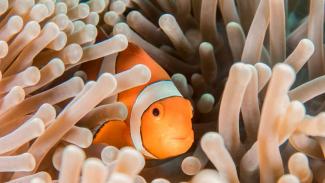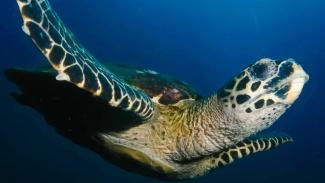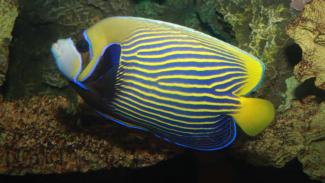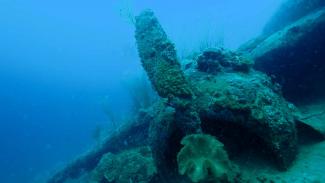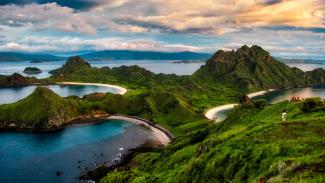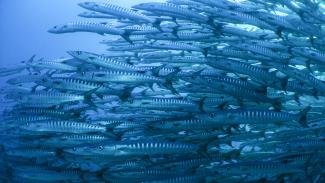Everything you need to know about dving Pulau Weh
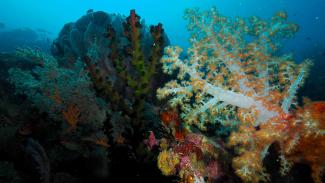
Sumatra is not as famous for diving as some of the more easterly Indonesian Islands, but little Pulau Weh offers much for the more adventurous diver.
Perched off the northern tip of Sumatra, it's position means that it is not affected by run-off from rivers and so has great visibility. It also receives a lot of nutrient rich currents, which bring with it a kaleidoscope of life.
In the waters around Pulau Weh it is possible to encounter all manner of marine life from the very large to a wealth of unusual smaller marine creatures.
Highlights
Best diving spots
One of the most popular dive sites is Batee Tokong, or Central Rock. This rock drops down to around 22m from the surface, before sloping to around 40m. A huge variety of fish gather at this site and on any dive you are likely to encounter Tuna, Trevally, Barracuda, Turtles, Napoleons and plenty of reef fish. Larger visitors, such as Devil Rays & Mantas often cruise by too. The slope is carpeted with a garden of large Gorgonians and the site is known for huge numbers of Moray Eels, which occupy almost every crevice & overhang.
On the exposed northern side of Batee Tokong is Shark Plateau - a sloping reef where you can encounter Blacktip & Whitetip Reef Sharks, Grey Reef Sharks & occasionally Silvertips. Further afield, Batee Meuduro is another great big-fish dive where Thresher Sharks are occasionally seen.
Another popular site is The Canyon - a huge pinnacle that has been split in two, creating a central canyon. In addition to the thrill of swimming through this imposing canyon, this site also attracts many larger animals. Napoleon Wrasse, Bumphead Parrotfish, Turtles & Barracuda are sometimes joined by Sharks, Eagle Rays & Manta Rays. In addition to the main Canyon, there is a nice cave here to explore and also a beautiful underwater arch that it is possible to swim through. As with many of Pulau Weh's sites, Gorgonians and Morays are common.
The currents around Pulau Weh creat good conditions for drift-diving, from gentle drifts to more adreneline fuelled dives. There is also some great wreck diving. For less experienced divers, there is small Tug Boat known as the Sabang Wreck that sits in only 14m.
For serious wreck divers, a deep wreck known as the Sophie Rickmers is a must. This 130m German Steamship was deliberately sunk by her crew in WWII after being confiscated by the Dutch. She now lies in 60m of water, with her wheelhouse at 38m, meaning she is only suitable for very experienced divers and can only be dived as a decompression dive. Those who make the effort will be rewarded with a beautiful, intact shipwreck.
The wreck is home to the rarely encountered black-spot Angelfish - a deep water species, as well as Seahorses, Batfish, Unicornfish, Groupers, Eagle Rays & of course many Morays. Occassionally, the plankton rich waters around the wreck attract Manta Rays & Whalesharks.
There is also excellent shore diving just of the beaches of Iboh & Gapang where you can find a whole host of intriguing critters. At Gapang Beach, there are resident Hawksbill Turtles & even occasional Manta sightings.
When to dive
The area can be dived all year round. The dry season, and probably best diving, is from April to October.
Getting there
The jumping off point for trips to Pulau Weh is Banda Aceh, which can be reached by air from Medan on Sumatra. It is also now possible to fly to Banda Aceh from Kuala Lumpur in Malaysia. From Penang in Malaysia, there is also a ferry to Medan.
It is not possible to get a visa on arrival in Banda Aceh, so you must arrange this in advance from an Indonesia Embassy.
The locals often refer to Pulau Weh as Sabang.
Activities
Aside from diving, this is a lovely island for relaxing and enjoying the surrounding nature. It is not a very touristy, so there is little in the way of nightlife or entertainment.
Resort and liveaboard options
Pulau Weh has a small number of dive centres and accommodation options to choose from. Despite the excellent diving, Pulau Weh remains undeveloped in terms of tourism, and the accommodation options tend to be fairly simple, budget options - all part of the charm of visiting this small island.


